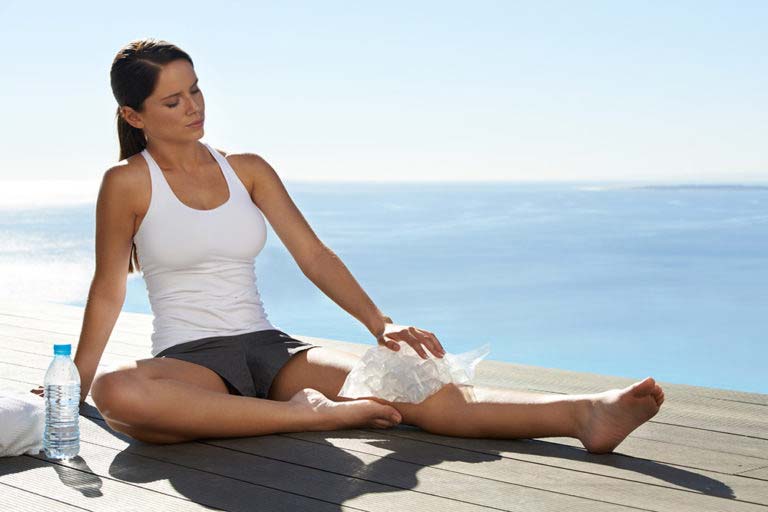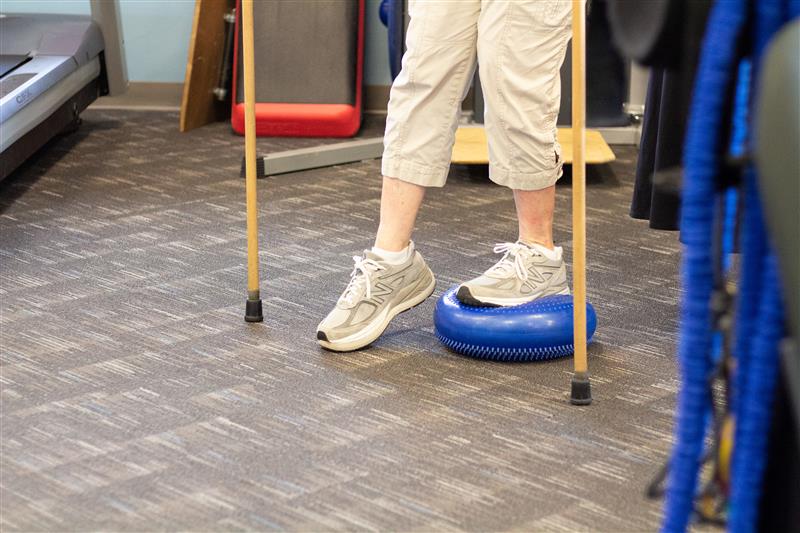Elevator go right, stairs go left, which do you choose? While taking the stairs is undoubtedly a benefit to your overall health, it does put stress on the knees, hips, and feet – especially going down. Patellofemoral pain syndrome is the most common cause of knee pain seen by doctors and is a pain that increases with stair climbing or squatting movements. The primary treatment is rest, pain relievers, or physical therapy, which also can reduce pain.
Where Does the Knee Pain Come From?
Most patients who come for physical therapy will have had x-rays and are often told they have cartilage damage. Yes, this is scary news, but not to fear: cartilage damage does not cause pain. There are no blood vessels or nerves in the cartilage. Your knee pain is due to inflammation of the soft tissue surrounding the knee, such as tendons, ligaments, and bursae. That irritation is caused by an imbalance of the muscles surrounding the knee. To many patients’ surprise, this problem typically originates in the lack of control of their hips and core.
Muscle control of the knee begins at the hips. The anterior muscles (quadriceps) cross over the knee joint via one major tendon that happens to have the patella sitting right in the middle of it. The IT band pulls from the outside, and the adductors pull from the inside. If one of the muscles on the front of the knee is pulling with more force than the others, then the patella could become off track and, given enough time, will begin to rub against the femur. If the muscles on the inside or outside are pulling too hard, the tibia can be a little off… Here comes your knee pain!
Physical Therapy for Knee Injury
- Rest, ice, compression, elevation (R.I.C.E)
- Manual therapy
- Correct the imbalance using specific exercises

The first is to help reduce inflammation, swelling, and pain. The second involves the hands-on stuff. Your physical therapist may perform soft tissue massage to help the inflammation. This helps reduce swelling and move your bones around to encourage joint health. Joints have no blood flow, so the only way to get nutrients to them is to move them. They may also perform trigger points, stretching, foam rolling, dry needling, and other neuromuscular techniques. These treatments help the overactive muscles do less work, allowing the critical third step to be effective. Correcting the imbalance through specific exercises.
By using these three elements together, patients get the pain relief they want, but more importantly, they actually fix the underlying issue and have a significantly decreased chance of returning symptoms. Yes, physical therapy takes time. It is not a “one and done” approach like pills and a brace, but correcting the problem fully is the best way to avoid that knee replacement down the road.
If you are experiencing knee pain or seeking therapy for a knee injury, contact one of our ProActive Physical Therapy clinics, and a licensed physical therapist can perform a free injury assessment and start treating the underlying problem.



